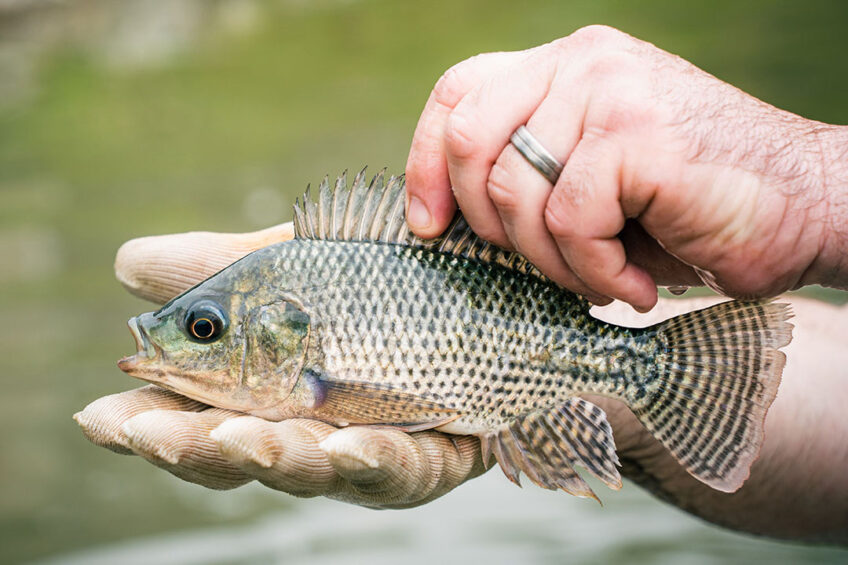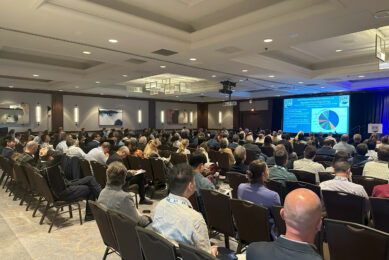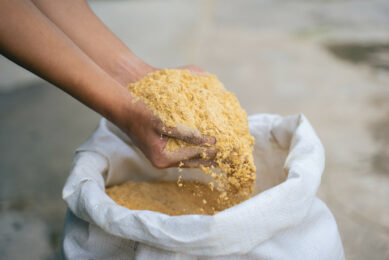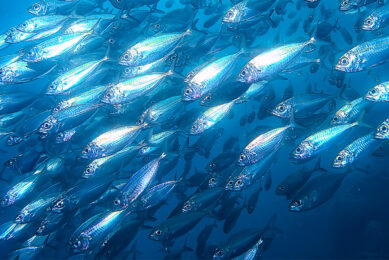Citrus limon extract improves Nile tilapia health

In a recently published study, researchers in Brazil found that supplementation with Citrus limon extract improves Nile tilapia juveniles’ growth performance, health, and survival after Aeromonas hydrophila infection.
Reports show that Nile tilapia (Oreochromis niloticus L.) is one of the main fish species cultivated in the world, especially in developing countries. Nile tilapia can optimise food conversion to weight gain, which is appreciated by fillet consumers. In general, Nile tilapia production occurs in intensive systems, which necessitates improvement in nutritional status to meet the metabolic demands generated by such production practices. On the other hand, synthetic drugs have been used for a long period in aquaculture as growth promoters and in controlling and preventing infectious diseases. However, such substances can result in unwanted problems, such as accumulating chemical waste in waters, presenting a potential risk to the health of humans and animals.
Recent studies show that in intensive aquaculture systems, fish are subject to infectious diseases caused by pathogenic bacteria such as Aeromonas hydrophila; this pathogen, which can cause illness and mortality in fish, is responsible for considerable economic losses in aquaculture.
Unlike synthetic drugs, plant extracts represent a natural alternative that is safe or environmentally friendly, with the potential to improve the growth performance and health of fish. Most plant extracts are known to have antimicrobial properties as they contain bioactive compounds such as polysaccharides, tannins, flavonoids, and organic acids, which are closely related to growth performance and beneficial metabolism factors in fish. Citrus limon extract is rich in polysaccharides (pectin), phenolic compounds (flavonoids), essential oils, vitamins and minerals.
In the current study, researchers explored the health and performance benefits of Citrus limon extract supplemented to a Nile tilapia diet and measured the resistance of Nile tilapia juveniles to Aeromonas hydrophila (A. hydrophila) infection.
The diets
Citrus limon extract (CLE), extracted from the fruit of C. limon or simply limon, was added to Nile tilapia juveniles’ diet at various inclusion levels as follows: The 6 isoproteic and isocaloric diets were formulated with the control diet having 0.0 g CLE per kg diet and extract treatments at 0.2, 0.4, 0.8, 1.6, and 3.2 g CLE per kg diet. The experiment lasted 60 days, followed by 8 days of bacterial infection challenge with Aeromonas hydrophila.
Health improvement
Aeromonas hydrophila is a ubiquitous bacterium often related to fish infections as an opportunistic pathogen that causes skin lesions, abdominal oedema, exophthalmia, and septicaemia. A challenge test is a valuable way to evaluate the effects of substances with immunostimulant proprieties.
In the current study, following the challenge with A. hydrophila, all groups receiving the extract in the diet, but mainly those from treatments 0.8 – 3.2 g CLE per kg diet showed increased survival compared to the infected control group, indicating that compounds from the extract (flavonoids and carbohydrates) have antibacterial efficacy against this bacterium. Even before bacterial infection, fish supplemented with a 1.6 g CLE per kg diet had a higher hepatosomatic index, erythrocytes, and more haemoglobin.
…adding the extract to the fish diet triggers a positive effect against the damage caused by bacterial aeromonosis
On the other hand, biochemical and haematological analyses provide essential information to determine the health status of animals. The Nile tilapia in the current study were not hyperglycemic and had an increase in plasma total protein for the 0.8 – 3.2 g CLE per kg diets. Results also showed the highest haemoglobin and mean corpuscular haemoglobin concentration (MCHC) values in fish supplemented with a 1.6 g CLE kg diet, which aligned with the best growth performance recorded in the current study. On the other hand, an increase in plasma total protein levels in the extract-supplemented diets indicated an improvement in the Nile tilapia’s health status; plasma total protein indicates the fish’s nutritional status and is related to the non-specific immune system. Another biochemical variable influenced by the levels of CLE tested in this study was plasma aspartate aminotransferase (AST) activity after the bacterial challenge, whose activity was reduced in fish fed CLE compared to the control group. AST is an enzyme in the liver, muscles, gills, and other tissues commonly related to tissue injuries.
“These results align with the lowest mortality recorded in juveniles infected by A. hydrophila fed with Citrus limon extract at the inclusion range of 0.8 to 3.2 g; therefore it can be concluded that adding the extract to the fish diet triggers a positive effect against the damage caused by bacterial aeromonosis,” according to the researchers.
Improving growth performance
Among the different diet inclusion levels tested, the 1.6 g CLE per kg diet reached the maximum levels for growth promotion, as determined by various parameters (weight gain, feed intake, and FCR) evaluated in the juveniles. The bioactive compounds present in the extract were related to the improvement of growth and feed utilisation in the Nile tilapia used in this study.
“Our study found the lowest FCR value with a 1.6 g supplementation of the extract; on the other hand, fish fed with twice this concentration at 3.2 g and those in the control group showed a reduction in growth performance. Thus, both an absence and an excess of Citrus limon extract in the diet may compromise the development of Nile tilapia compared to intermediary concentrations,” they said.
The main sites of fat deposits in Nile tilapia are the viscera where the PFI (perivisceral fat index) is directly related to abdominal fat deposition; reduction of the PFI could indicate an alteration in adipocyte synthesis and lipid metabolism, triggering a redirection of dietary energy for tissue growth. Fish fed with 1.6 (and 0.8) g CLE per kg diet had a lower PFI value; the researchers suggested that this positive result must have been influenced by the anti-lipogenic flavonoids and diuretic action of the extract as highlighted in similar studies.
Concluding remarks
The researchers acknowledged that according to their study and similar previous studies, citrus species have demonstrated the potential to generate prospective products such as Citrus limon extract that can be employed against bacterial fish pathogens.
“We recommend a 1.6 g Citrus limon extract per kg diet for Nile tilapia because this concentration improved zootechnical performance, physiological status and resistance to infection by Aeromonas hydrophila,” the researchers remarked.
The original article was written by Roger Oliveira e Silva, Carlos Eduardo Copatti, Gilmar Amaro Pereira, Juliano dos Santos Macedo, Anderson Miranda de Souza, Lívia Macedo Dutra, Jackson Roberto Guedes da Silva Almeida, Guillaume Le Reste, and Jose Fernando Bibiano Melo. 2024. Promotion of growth and resistance against Aeromonas hydrophila in Nilea tilapia juveniles supplemented with Citrus limon extract. Aquaculture, 578:740115.











